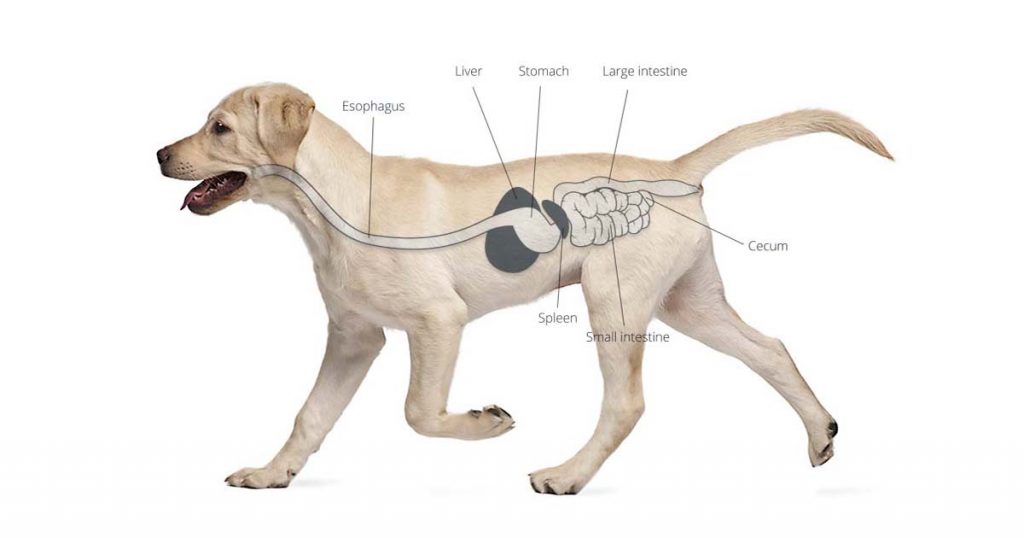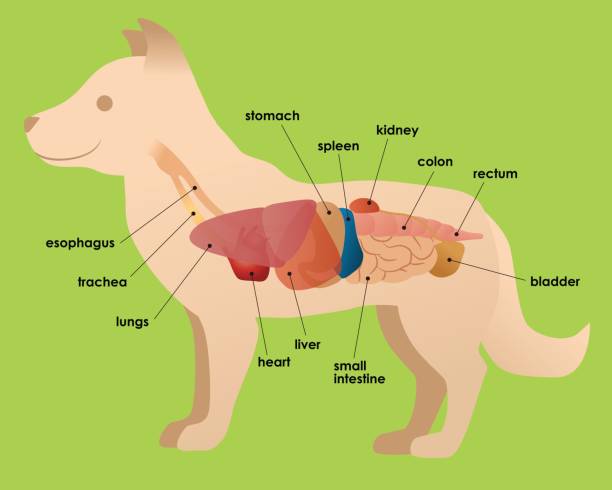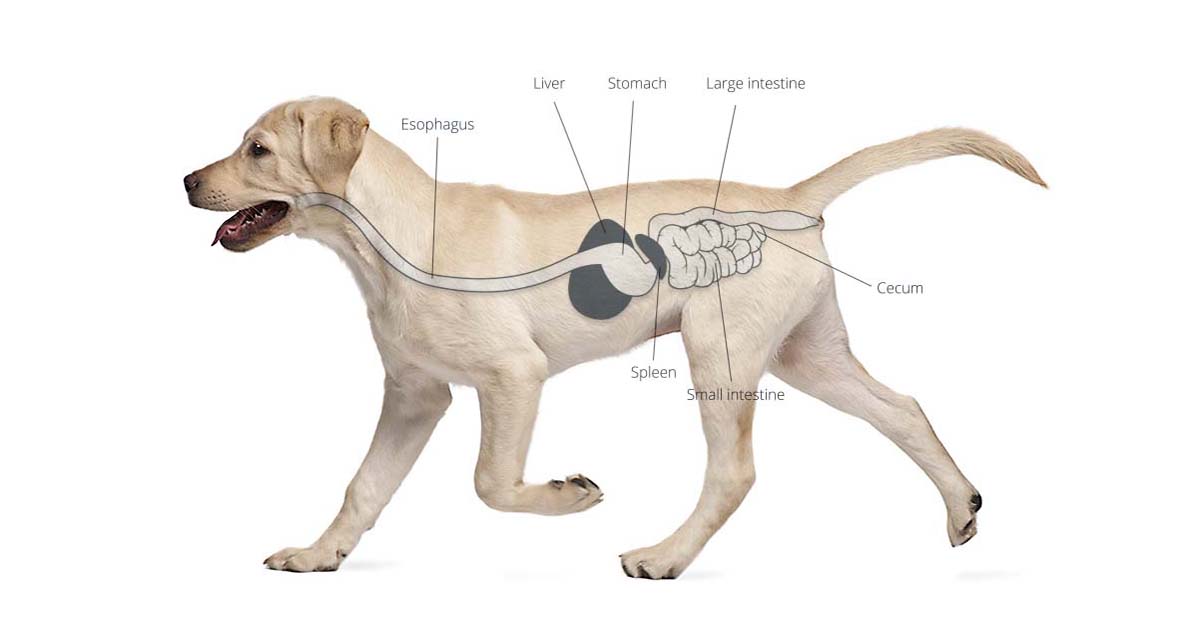As an Amazon Associate, I earn from qualifying purchases
Have you ever looked at your furry friend and wondered, “How big is my small dog’s stomach?” You’re not alone.
Understanding the size of your small dog’s stomach can help you ensure they’re getting the right amount of food for their unique needs. It’s a common question that sparks curiosity among pet owners like yourself. By knowing this, you can make more informed decisions about their diet and overall health, potentially preventing issues like obesity or malnutrition.
So, if you want to ensure your beloved companion is as happy and healthy as possible, keep reading. You won’t want to miss these insights that could make a world of difference for your small dog’s well-being.
Small Dog Stomach Size
A small dog’s stomach is typically the size of a walnut. It can hold around one to two ounces. Keeping this in mind helps in understanding their dietary needs.
Understanding the size of a small dog’s stomach can help you ensure they stay healthy and happy. Many pet owners might wonder just how big their little companion’s stomach really is. This knowledge helps you feed them correctly and avoid potential health issues. The stomach of a small dog, such as a Chihuahua or a Yorkshire Terrier, is surprisingly tiny. On average, it holds about 1-2 ounces of food. This is roughly equivalent to the size of a golf ball or a small egg.
Understanding Your Dog’s Needs
Knowing this, you might be surprised by how little your small dog actually needs to eat. Despite their small stomach size, these little dogs often have high energy levels. They may require multiple small meals throughout the day to keep their energy up.
Feeding Small Dogs Properly
To avoid overfeeding, focus on the quality of the food rather than the quantity. Provide nutrient-dense meals that are rich in protein and healthy fats. This ensures they get the energy they need without overloading their tiny stomachs.
Signs Of Overfeeding
Have you noticed your dog looking uncomfortable or bloated after meals? This could be a sign of overfeeding. Watch for signs such as lethargy, vomiting, or changes in bowel movements. Adjust their diet if you notice these issues.
Finding The Balance
Feeding your small dog the right amount is a balancing act. Consider their activity level, age, and overall health. Regularly check their weight and consult your vet for tailored advice.
Practical Tips For Feeding
Use a measuring cup to portion meals accurately. Avoid giving table scraps that could upset their digestive system. Stick to a consistent feeding schedule to help regulate their digestion.
Engage With Your Pet
Have you tried different feeding techniques? Some owners use puzzle feeders to slow down eating and provide mental stimulation. This can also prevent gulping, which might cause stomach upset. Understanding your small dog’s stomach size helps tailor their care to their unique needs. Are you ready to ensure your furry friend gets the best nutrition possible?

Factors Influencing Stomach Capacity
Understanding the stomach capacity of small dogs is crucial for their health. Several factors influence how much a small dog’s stomach can hold. These factors impact not only their eating habits but also their overall well-being. Let’s explore these factors to get a clearer picture.
Breed And Size Variations
Different breeds have varying stomach sizes. A Chihuahua’s stomach is smaller than a French Bulldog’s. Size plays a significant role. Smaller breeds often have smaller stomachs. This affects how much they can eat in one sitting.
Age And Growth Stages
Puppies have smaller stomachs compared to adult dogs. As they grow, their stomach capacity increases. Older dogs may experience changes in stomach size due to health factors. Age impacts how much food they can digest effectively.
Dietary Habits
A dog’s diet influences stomach capacity. A high-fiber diet may require more stomach space. Frequent feeding can alter stomach size and function. The type of food also plays a role. Wet food might be easier to digest than dry kibble.
Comparing Stomach Sizes
Understanding the size of a small dog’s stomach helps in proper feeding. It ensures your furry friend remains healthy and happy. Small dogs have unique needs compared to larger breeds. Their stomach size plays a crucial role in digestion and nutrient absorption.
Small Vs. Medium Dogs
Small dogs typically have much smaller stomachs than medium-sized breeds. This means they require less food at each meal. Feeding them large portions can lead to digestion issues. Medium dogs have larger stomachs, allowing them to handle more food comfortably. Their digestive systems are built to manage bigger meals.
Impact Of Breed Differences
Breed differences impact stomach size significantly. A Chihuahua’s stomach is smaller than a Beagle’s. This means each breed has different dietary needs. Smaller breeds often need more frequent meals. Larger breeds can eat less often but in larger quantities. Knowing your dog’s breed helps you tailor their diet effectively.
Signs Of Digestive Issues
Small dogs have delicate stomachs. They often face digestive issues. Owners must know the signs. Early detection helps prevent problems. Understanding these signs can make a difference. Watch for any unusual behavior. This guide will help identify common symptoms.
Overeating Symptoms
Overeating harms small dogs. It stretches their tiny stomachs. Dogs may vomit or have diarrhea. They might act lethargic or uncomfortable. Excessive gas is another sign. Monitor food portions closely. Smaller dogs need less food than larger breeds.
Underfeeding Concerns
Underfeeding leads to other issues. Small dogs need enough nutrients. Lack of food can cause weight loss. They may seem weak or tired. Their coat might lose its shine. Check for signs of malnutrition. Regular meals are crucial for their health.
Digestive Disorders
Digestive disorders are common in small dogs. Watch for persistent vomiting. Diarrhea that lasts more than a day is concerning. Loss of appetite is another symptom. Abdominal bloating or pain can occur. Seek veterinary advice if these signs appear.
Feeding Recommendations
Understanding the feeding needs of small dogs is crucial for their health. A small dog’s stomach is tiny. This means they require careful feeding to avoid overfeeding. Proper feeding ensures they get the nutrients they need without gaining excess weight. Let’s explore some essential feeding recommendations.
Portion Control
Small dogs need small portions. Their tiny stomachs can’t handle large meals. Measuring food is important. Use a cup or scale for accuracy. Follow guidelines on the food package. Adjust portions based on your dog’s activity level. Consult a vet for personalized advice.
Frequency Of Meals
Small dogs benefit from frequent meals. Feed them two to three times daily. This helps maintain energy levels. It also prevents blood sugar drops. Avoid feeding once a day. This can lead to digestive issues. Regular meals promote a healthy metabolism.
Nutritional Balance
Small dogs need a balanced diet. Ensure their food has essential nutrients. Protein, fats, and carbohydrates are key. Look for high-quality dog food. Check for nutrients like vitamins and minerals. Avoid fillers and artificial additives. A balanced diet supports their overall health.

Veterinary Insights
Understanding the size of your small dog’s stomach can be crucial for their health and well-being. Many pet owners might be surprised to learn just how small these stomachs can be. Veterinary insights can provide valuable knowledge to help you care for your pet better. This information is not just for emergencies but can inform daily feeding routines and overall health monitoring.
When To Consult A Vet
Knowing when to consult a vet can make all the difference for your small dog. If you notice your dog experiencing discomfort after meals, it could be a sign their stomach is overwhelmed. Frequent vomiting or a bloated belly might also indicate something is amiss.
Don’t wait for problems to escalate. Catching issues early often leads to simpler solutions. If you’re unsure, it’s always better to err on the side of caution and schedule a veterinary check-up.
Diagnostic Methods
Veterinarians have several diagnostic tools at their disposal to assess your dog’s stomach health. X-rays can help visualize the stomach size and identify any unusual blockages. Ultrasounds provide detailed images to help vets understand the stomach’s condition and surrounding organs.
Blood tests can reveal underlying issues that might not be immediately visible. Discussing these options with your vet can give you peace of mind and ensure your pet gets the best care.
Have you ever wondered what your dog is trying to tell you with their behavior? Paying attention to changes can be your first clue that something isn’t right. Your observations, combined with a vet’s expertise, form the foundation of your pet’s health journey.

Frequently Asked Questions
What Is The Average Size Of A Small Dog’s Stomach?
The average size of a small dog’s stomach is roughly the size of a tennis ball. It can vary depending on the breed, age, and health. Small dogs typically have smaller stomachs than larger breeds, which means they may require more frequent feeding.
How Much Food Can A Small Dog’s Stomach Hold?
A small dog’s stomach can hold around 1 cup of food at a time. The capacity depends on the dog’s size and dietary needs. It’s crucial to avoid overfeeding, as small stomachs can easily become overwhelmed, leading to health issues.
Are Small Dog Stomachs Sensitive?
Yes, small dog stomachs are often sensitive, making them prone to digestive issues. Their smaller size means they can react more strongly to dietary changes. It’s important to feed them a balanced diet and monitor for any adverse reactions to new foods.
How Often Should Small Dogs Eat?
Small dogs should eat 2-3 times daily to accommodate their smaller stomachs. Frequent feeding helps maintain their energy levels and supports digestion. It’s essential to provide balanced portions suitable for their size and activity level.
Conclusion
Understanding a small dog’s stomach size helps in their care. It guides feeding and health decisions. Small dogs have tiny stomachs, needing frequent, small meals. Overfeeding can cause health issues. Regular vet checks ensure your dog stays healthy. Always observe your dog’s eating habits.
Adjust meals as needed. Their well-being depends on your attention. Remember, a balanced diet supports a happy, active pet. So, give your little friend the right amount of food. Keep them healthy and energetic. Enjoy every moment with your furry companion.
As an Amazon Associate, I earn from qualifying purchases
